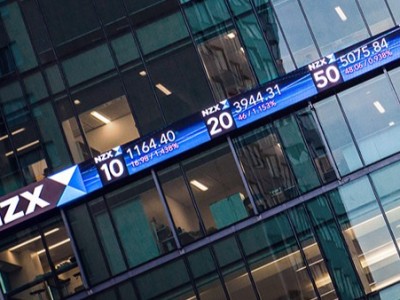Learn » Blog » Active vs Passive: Which is best in a challenging market?
Active vs Passive: Which is best in a challenging market?
Published on 28/04/2025

By Liv Lewis-Long
At its core, investing is about making your money work harder for you over time. But when it comes to smart investing, there are some key decisions to make. How much should I invest vs save? Which fund manager or platform should I choose? What exactly to invest in? How often should I invest? And is now even a good time to invest, given the current global economic uncertainty?! Trump tariffs, inflation, interest rates, recession - what a time to be alive.
Before making some of these key decisions, it's important to properly understand the two primary approaches to investment management - active and passive. Hotly debated by seasoned investors and fund managers alike, they both have their strengths and weaknesses. But I suspect there may also be plenty of misunderstanding around the realities of active vs passive investing, partly thanks to dramatic movie storylines depicting wildly successful and rich Wall Street moguls, and partly via cleverly-worded marketing extolling the virtues of an active approach.
So let’s clearly define the two approaches:
With active investment, fund managers or individual investors aim to outperform the overall market by picking and choosing individual shares and/or other assets such as bonds, cash and property. They may try to identify undervalued assets (aka those they deem "on sale"), time the market to take advantage of particular (often short-term) opportunities, or follow themes or ideas about which specific investments will outperform the broader market.
Passive investing is a more hands-off approach. Investors and investment managers build a diversified portfolio using a particular 'index' such as the S&P 500 that tracks the broader market. Instead of attempting to beat the market, they seek to match its overall performance. This approach, while sometimes being insinuated as the “lazy” option by those advertising active management, is based on the theory that over the long-term markets are efficient and go up in line with economic growth. Essentially, by closely tracking the market using an index , passive managers can harness that growth in the most efficient manner.
Here are some of the key differences I would highlight between the two approaches, specifically as they apply to managed funds:
Diversification
Passive funds typically provide broader diversification across an entire market or broad sector, reducing the risks associated with individual asset selection - for example being reliant on one or few specific investments. Active funds can absolutely be highly diversified too, but their portfolios tend to hold fewer investments - given each asset is individually selected, bought, and managed within the fund or portfolio.
Costs and fees
Passive funds generally have lower expense ratios compared to active funds. They tend to trade in a more automated manner and less frequently, which leads to lower transaction and management costs for the fund manager. This in turn allows the manager to keep fund fees low - so investors can retain a higher proportion of their net returns. Active funds usually require continuous research, analysis, and decision-making about which assets to buy, sell, and hold - often leading to higher research and management costs. The cost of this effort will usually be passed on to the investors in the form of higher fund charges, regardless of the performance of the fund.
Performance
The performance of a passive fund should be very similar to the performance of the index it’s tracking, which means that the fund will reflect both the ups and the downs of that index. Passive funds are unlikely to outperform the market, given they are designed to closely track it. Because active fund managers choose specific investments, they have the potential to outperform the market on the upside and limit losses when the market declines, relative to the index. On the flip side though, they also have the potential to underperform the market depending on the decisions the fund manager makes.
So isn’t active investing better when the market is volatile?
This is a fair question, especially in the current economic situation. Markets globally have already seen some big swings in 2025, with plenty more uncertainty expected in the short term future. We’ve had a combination of Trump’s re-election and proposed tariffs, slowing economic growth, inflation proving stickier than expected, and investor sentiment taking some serious dives - all in just four months! All these factors contribute to ongoing high volatility, as the VIX Volatility Index (a global measure of stock market volatility expectations) has shown so far in 2025.
Some will argue that this is where active managers shine - naturally, they talk about being able to adjust quickly, minimise the impact of downturns, and pick short-term winners. And sure, a number of active managers might do well in any given year. But global data shows that very few consistently outperform the market (or even stay in business!) over the longer term, especially after fees are taken into account.
Looking at the long-term data
SPIVA, the research arm of S&P Global (which runs the US-based Dow Jones indices), has been providing critical insights into active vs passive fund performance for over two decades. It specifically tracks how active funds perform against their benchmarks over time. According to the latest SPIVA report, more than 91% of US large-cap active fund managers underperformed the S&P 500 over the last 10 years*. That trend is echoed in smaller markets like Australia and New Zealand, where 85% and 75% of active managers respectively have consistently delivered below-market returns after fees and taxes**. The NZX 50 has lagged behind its international peers due to our smaller economy and limited sector exposure. But none of that changes the long-term data: staying invested in a low-cost, index-tracking fund has historically had a higher chance of performing well than investing in an actively managed fund.
If anything, market downturns can be an opportunity for long-term passive investors, especially those still in the accumulation phase (like many KiwiSaver members). With regular contributions and dollar-cost averaging, you’re effectively buying into the market at lower prices, which can boost long-term returns once the market recovers. And we’ve seen time and time again over history, it inevitably does. It’s clear that no one (not even super-smart professional investment managers) can predict exactly when and how markets will move, for the better or worse.
In my humble, and of course biased opinion (note the emphasis here), the SPIVA data, alongside differences in cost and the dependence of active management on consistently good decisions/skill, provide substantial evidence in favour of passive investing. While active strategies certainly can and do have their moments of success, the consistency, cost efficiency, and long-term performance of passive investments make them an attractive option. As always though, it is essential for investors to understand their risk tolerance, objectives and time horizon, and consider seeking advice before making any investment decision.
In uncertain times, it can be tempting to change your investment strategy, and jump into something that sounds smarter, faster, or more reactive. But long-term investing isn’t about the short game. It’s about staying the course, keeping calm and carrying on.


